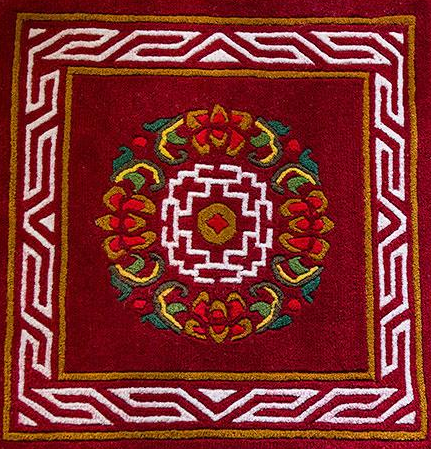Nepal seems like a continuous art gallery and museum, where craft, art and architecture are inextricable intermingled. The finest woodcarving and the best sculpture are often part of a building – a temple is simply not a temple without its finely carved roof struts. The crafts also reflect the uniquely Nepali melting pot where religious art has Tantric, Hindu, and Buddhist overtones and the dividing line is hard to discern.
The great skill, knowledge and ability alive in practising artisans is apparent on an everyday basis – while walking through the city streets. When the Hanuman Dhoka palace in Kathmandu and the Tachupal Tole buildings in Bhaktapur were restored in the 1970s the work was performed by purely traditional means and with craftwork of the same level of excellence as in the past. More recently the Chyasilin Mandapa in Bhaktapur, completely destroyed in the great earthquake of 1934, was totally rebuilt in 1989-90, again using traditional skills.
Yet the artisans are working against overwhelming odds ever since the opening up of Nepals frontiers to the outside world little more than half a century ago. The large scale imports into Nepal from its more developed neighbours, the influences of modern lifestyles, changing consumer habits and the dominance of television beamed from outside its boundaries have resulted in many changes in the way of life. In this new scenario there has been a headlong and non-discerning rush to discard the old and acquire the new, imported lifestyle. These changes are reflected not only in the country’s economic indicators but in the human index – a steady decline in hereditary occupations and migration to the cities of skilled artisans looking for daily labour work. In the arts and crafts this is further reflected in the loss of many traditional craft forms and the significant decline of many others.
On the positive side, however, is the remarkable appreciation shown by visitors to Nepal of its craft tradition and the tremendous boost and resurgence of demand some of the crafts have received due to this.
The need of the hour is to preserve, document and disseminate information of these traditions, a need made more pressing by the fact that these traditions are more often than not mainly oral in nature – with the passage of time they can be lost to the generations to come. There is a need for efforts to preserve endangered crafts and provide design interaction, technical upgradation and marketing support to crafts and artisans.
